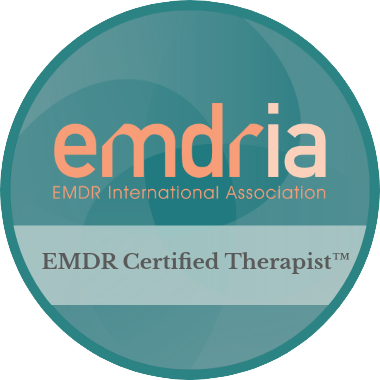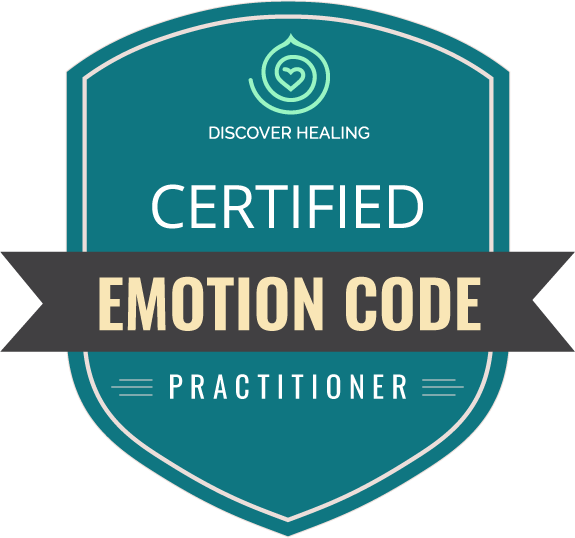 EMDR is a mind-body system therapy considered to be a mainstream therapeutic approach. EMDR is used to address everything from resolving the effects of life trauma to enhancing personal performance, rebuilding the Self and healing anxious beliefs.
EMDR is a mind-body system therapy considered to be a mainstream therapeutic approach. EMDR is used to address everything from resolving the effects of life trauma to enhancing personal performance, rebuilding the Self and healing anxious beliefs.
Initially, EMDR was developed to help resolve the effects of a life trauma. EMDR works with the cognitive (thoughts), emotional, neurological, and somatic (body) systems, When used for resolving the effects of trauma, EMDR helps to identify, process, integrate and release negative emotions and memories, and it is used worldwide to help victims of trauma to heal and move on with their lives.
 Since most people seeking EMDR do so because of a life trauma, some background information about how trauma affects our central nervous system may help with understanding how EMDR can help. When memory for the actual event can recede into unconsciousness, the central nervous system encodes it along neurological associational pathways. This encoding process is one of the ways our mind-body system has of never forgetting a situation that was perceived to be threatening. This system for self-protection is tied in with the fight or flight responses that is part of our hardwiring. It is easy to see how it helps us when we are really in danger. However, when the memory system for a past event perceived to have been threatening is triggered in our current life, this can cause us all kinds of difficulties. EMDR appears to facilitate the central nervous system in accessing memories encoded along associational pathways, and in processing, integrating and releasing conscious and unconscious memories of these past experiences.
Since most people seeking EMDR do so because of a life trauma, some background information about how trauma affects our central nervous system may help with understanding how EMDR can help. When memory for the actual event can recede into unconsciousness, the central nervous system encodes it along neurological associational pathways. This encoding process is one of the ways our mind-body system has of never forgetting a situation that was perceived to be threatening. This system for self-protection is tied in with the fight or flight responses that is part of our hardwiring. It is easy to see how it helps us when we are really in danger. However, when the memory system for a past event perceived to have been threatening is triggered in our current life, this can cause us all kinds of difficulties. EMDR appears to facilitate the central nervous system in accessing memories encoded along associational pathways, and in processing, integrating and releasing conscious and unconscious memories of these past experiences.
Recollection, when we have it, comes back through mental pictures, sounds , thoughts, smells, emotions and/or body sensations, and is associated by the brain to other, similar experience that have occurred during our life . The wrinkle is the brain encodes experience through memory in various locations, according to our perception and incoming data from our five senses. Sometimes a component of a positive experience can be encoded on the same associational pathway with a negative experience. This is how memory is encoded and also how it comes to consciousness during the EMDR process. Perhaps this explains how people who have experienced EMDR often comment about how seemingly disparate bits of memory come to consciousness sequentially during the processing. What appears logical is actually neurological.
What happens during an EMDR session?
During EMDR you (as the client) recall a situation you want to address. I, as the therapist, simply elicit information from you related to the experience and guide you through the process. Simultaneously, bilateral stimulation is used. This could be looking back and forth with your eyes, or the use of tones or vibrational pads which you hold.
We stop frequently to explore your experience, and each time something new comes up for you, the process is repeated.
We work together as partners in the process, and we stop anytime you feel the need to do so.
What is bilateral stimulation and how does it work?
Bilateral stimulation is a process whereby alternating sides of the body are stimulated in some way during EMDR. Bilateral stimulation during EMDR may be the same as what occurs during REM or dream sleep when rapid eye movements occur. It is thought that this process may aid in the integration of unconscious material.
Bilateral Stimulation is done in several ways. For example:
- The clients eyes follow a light bar that moves back and forth during the process
- The client listens to tones through earphones
- The client holds theratappers, one in each hand. They vibrate at varying times, first one then the other, thereby creating bilateral stimulation to the body.
People often experiment with these methods and choose what suits them best; and often these methods are used in tandem.
Important things to know about EMDR therapy
If you decide to pursue EMDR therapy, there are some things for you to know:
- You are in control of the process and it is your own brain and central nervous system that does the processing and releasing.
- We work together as a team in the EMDR process.
- EMDR may bring up strong emotional responses. This is an expectable part of the releasing and integrating process.
- Memory processing may continue between sessions via memories, dreams, emotional surges, and/or physical sensations. This is to be expected.
“Unlike Trauma Informed CBT, EMDR Therapy does not involve detailed descriptions of the event, direct challenging of beliefs, extended exposure, or homework.”—World Health Organization (WHO) recommends EMDR in new guidelines
Although what happened to you cannot be changed, EMDR Therapy can change how it’s stored in your brain and body. After EMDR Therapy at our center, the trauma or problem will no longer hijack your system. What happened to you will become factual, without the emotional and/or visceral effects that it once had on you.
Resources
Content warning: gun is shown








